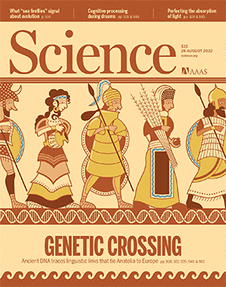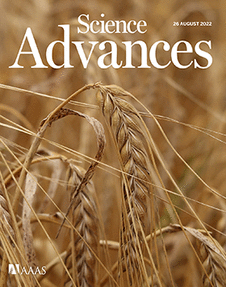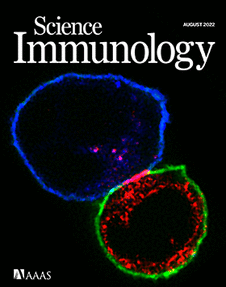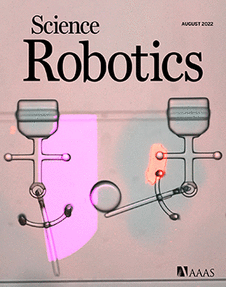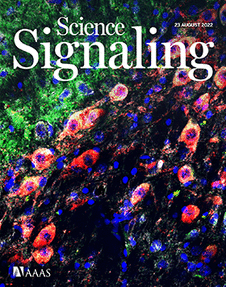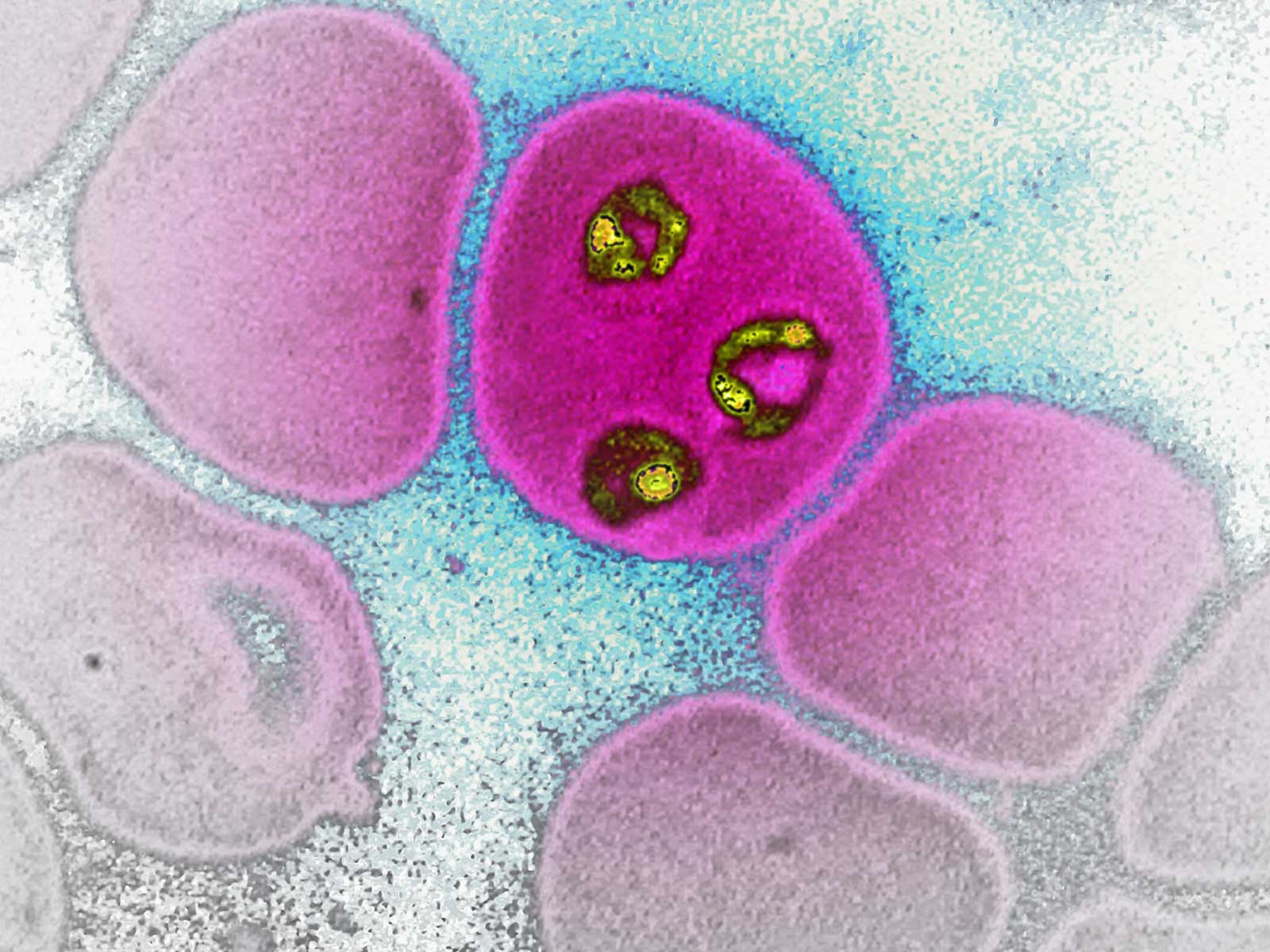
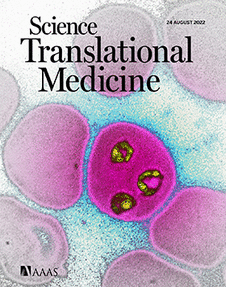
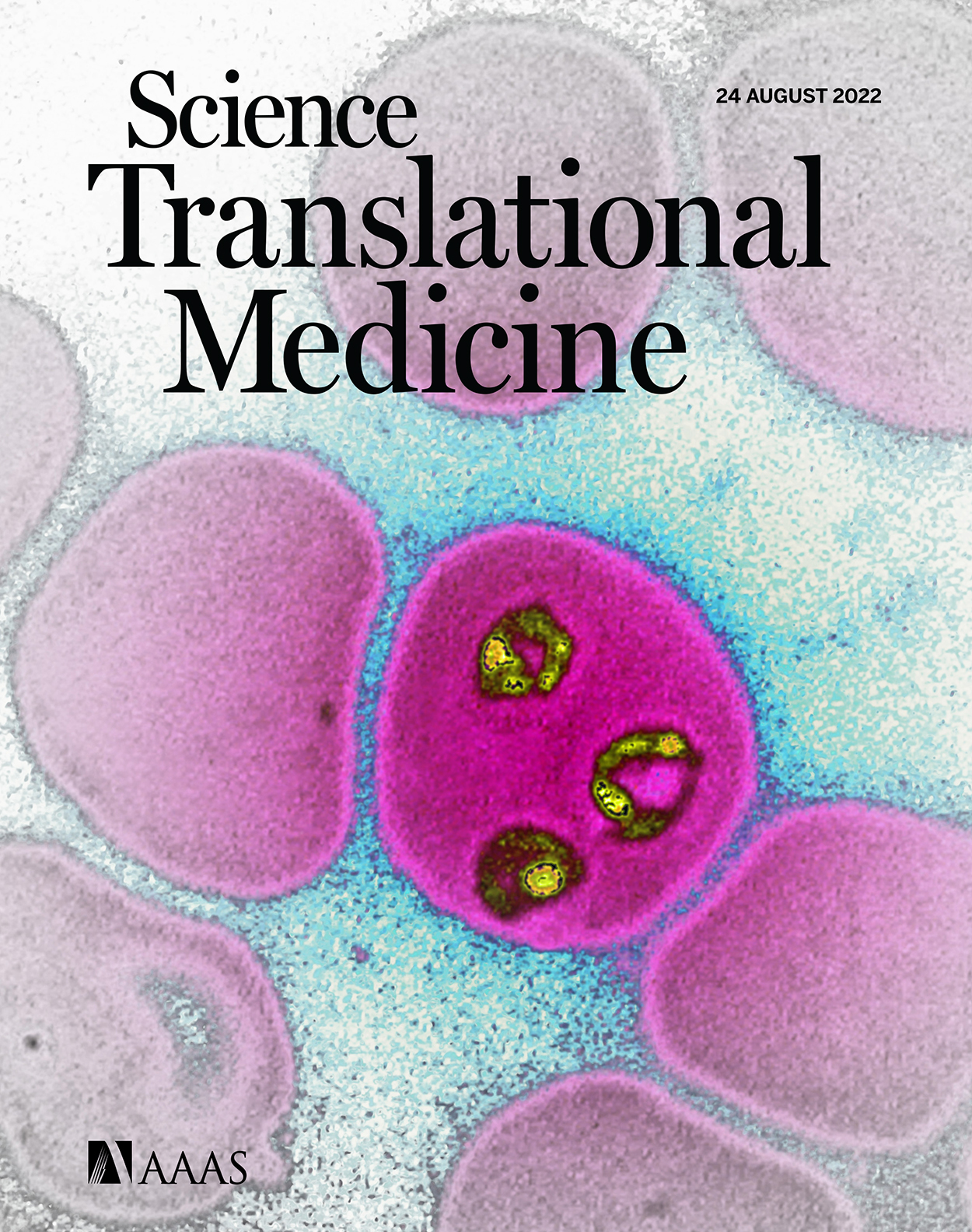
ONLINE COVER Genetically Attenuated Parasites. The cover image shows a color-enhanced light micrograph of ring-stage Plasmodium falciparum (yellow), one of the species of Plasmodium that causes malaria in humans, inside of a human erythrocyte. A safe and effective malaria vaccine is essential to curb the morbidity and mortality caused by P. falciparum infection. Murphy et al. evaluated the safety, tolerability, and immunogenicity of a genetically attenuated P. falciparum with deletions of the P52, P36, and SAP1 genes (PfGAP3KO). Malaria-naïve volunteers were vaccinated with PfGAP3KO sporozoites via mosquito bite delivery. The authors found that PfGAP3KO vaccination provided protection against controlled human malaria infection, supporting further clinical evaluation of this vaccine candidate.
Credit: James Cavallini/Science SourceScience Translational Medicine
- Volume 14|
- Issue 659|
- 24 Aug 2022
ONLINE COVER Genetically Attenuated Parasites. The cover image shows a color-enhanced light micrograph of ring-stage Plasmodium falciparum (yellow), one of the species of Plasmodium that causes malaria in humans, inside of a human erythrocyte. A safe and effective malaria vaccine is essential to curb the morbidity and mortality caused by P. falciparum infection. Murphy et al. evaluated the safety, tolerability, and immunogenicity of a genetically attenuated P. falciparum with deletions of the P52, P36, and SAP1 genes (PfGAP3KO). Malaria-naïve volunteers were vaccinated with PfGAP3KO sporozoites via mosquito bite delivery. The authors found that PfGAP3KO vaccination provided protection against controlled human malaria infection, supporting further clinical evaluation of this vaccine candidate.
Credit: James Cavallini/Science Source